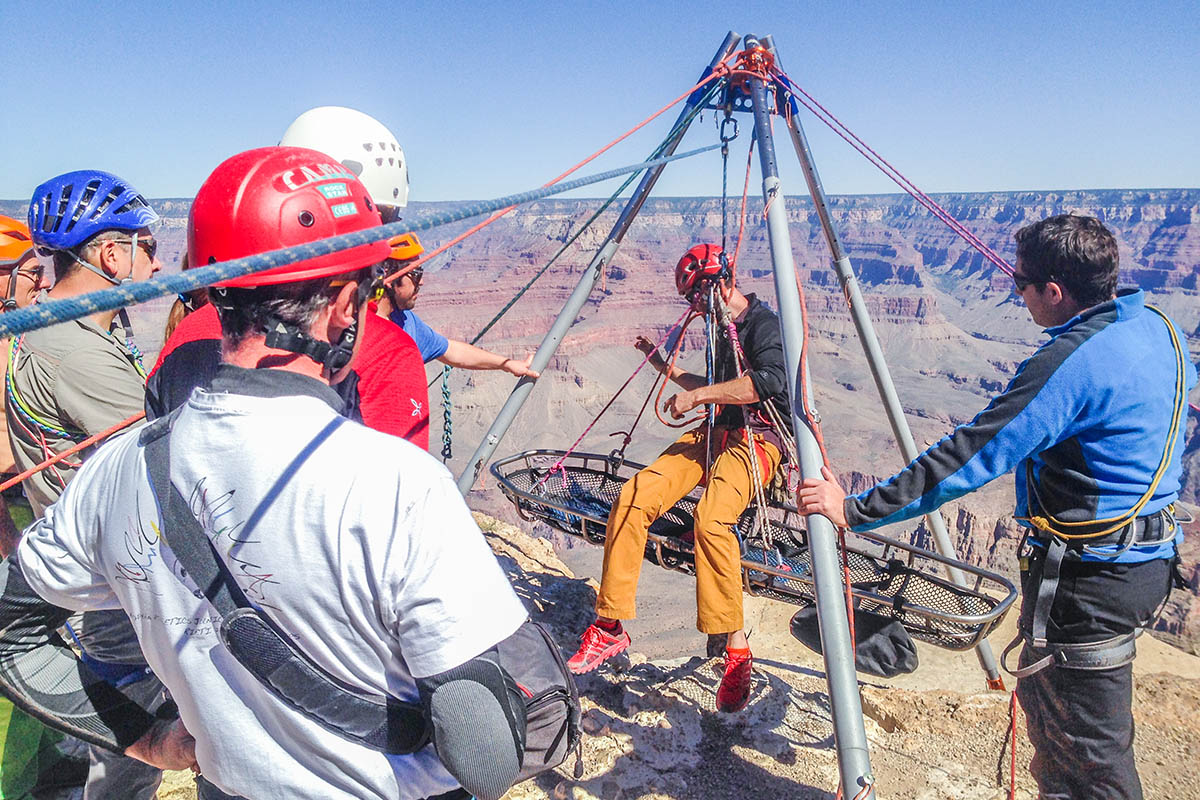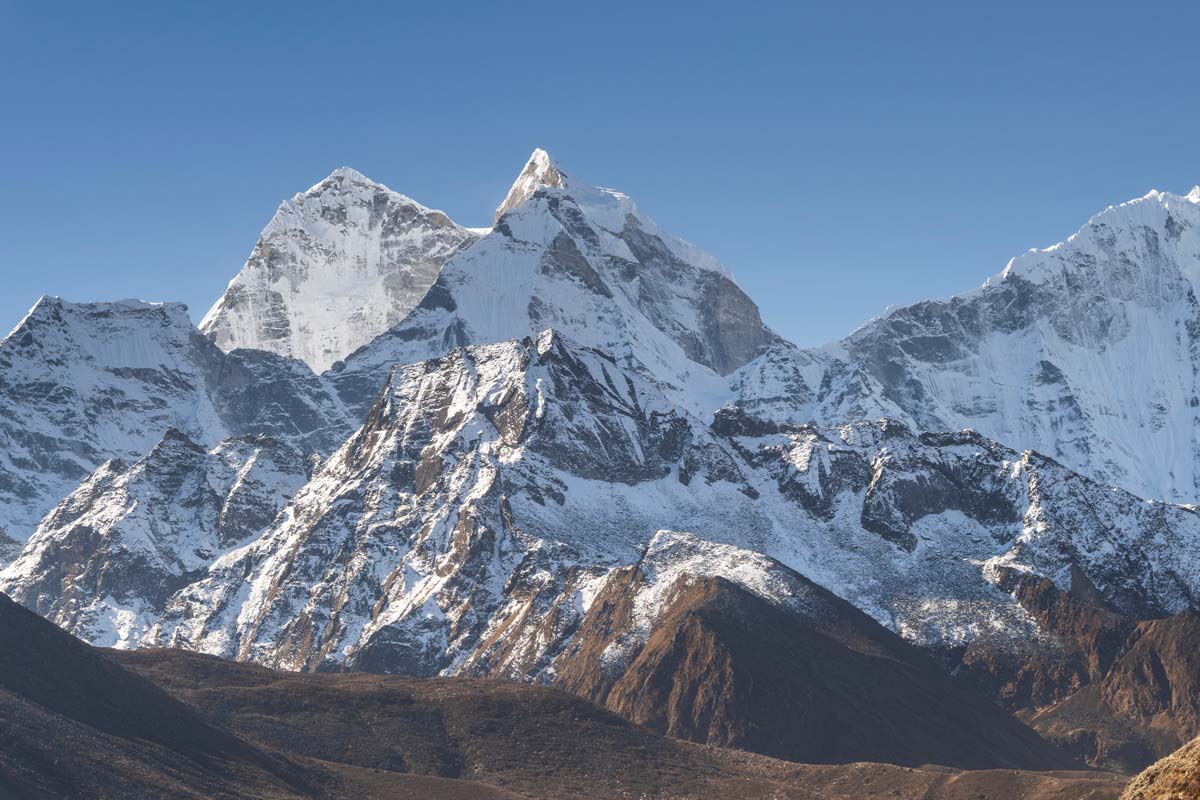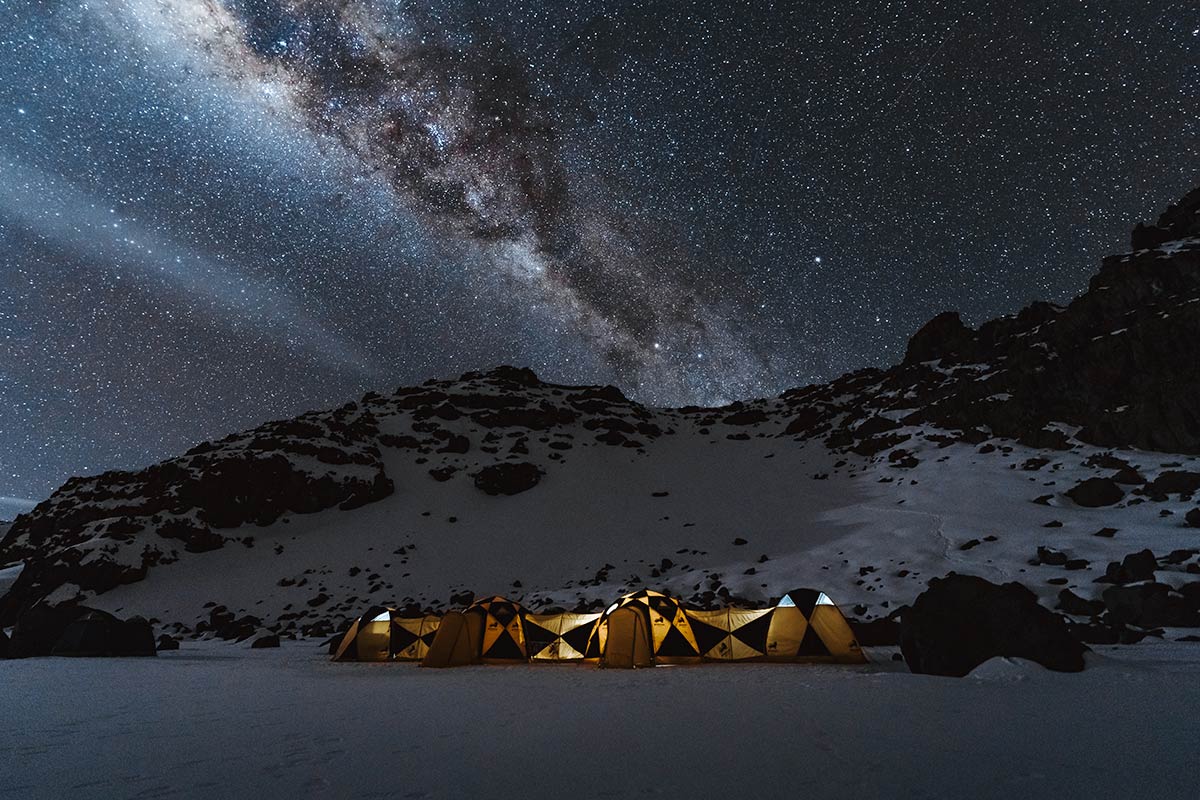The second in our series exploring a profound human passion for the mountains profiles Jason Williams, New Mexico-based mountain rescuer.
Jason’s skills and experience cover a wide range of mountain rescue sectors. He is a nationally-registered paramedic and obtained his Mountain Emergency Medicine and Rescue Diploma under the shadow of the Matterhorn in the Alpine Rescue Centre, Zermatt. Today, he is Director of the International Mountain Medicine Center at the University of New Mexico where he oversees all Austere, Wilderness, and Mountain Medicine programmes. In parallel he is the founder/director of UNM’s UIAA-affiliated Diploma in Mountain Medicine programme and co-directs the Wilderness Medicine Rotation for fourth year medical students and residents.
He has rock climbed all over the world but admits nothing beats ‘being perched on a granite cliff face in my hometown’s local Sandia mountains with my life-long climbing partner/wife.’ Here is Jason’s story.

Early role models
I have vivid childhood memories, watching from the trailhead of my fathers’ parked vehicle, of rescuers shouldering climbing equipment and heavy backpacks in a rush to render aid. My father, a volunteer firefighter and pioneer of mountain rescue in New Mexico, became a role model for my future dreams and goals. My youth gave me the desire to be in the mountains, to serve my community, and to educate others in remote settings.
Freedom to explore
My first job during high school was a Tramcar Operator at the Sandia Peak Tramway in Albuquerque, New Mexico. The Sandia Peak Tramway is the longest aerial tramway in the Untied States and ascends to 3,160 meters. While I grew up in a household atmosphere that adored the mountains, it wasn’t until I began riding the tramcar that I realised spending time in the mountains is what I loved doing. I remember early morning maintenance tram rides, standing on top of the tramcar clipped securely into the frame I could feel the cool and crisp air on my skin and stare out at the morning sun peaking over the granite cliffs.
Drawn to mountain rescue
I began formally training for mountain rescue at the age of 17 when I joined Albuquerque Mountain Rescue, a volunteer non-profit backcountry rescue team; it was here that I honed my clinical and non-clinical mountain rescue skills. At this time I also began rock climbing and trained with several aspiring mountain guides. I found that the skills obtained during multi-pitch traditional rock climbing were invaluable to my rescue career. To this day I still feel that mountain rescuers should have a strong background in technical climbing and alpinism.
The Switzerland experience
In 2011 I took to the Alps of Switzerland and trained with Air Zermatt, a distinguished mountain air rescue service, and completed an International Diploma in Mountain Emergency Medicine and Rescue. This programme is designed to refine individual’s mountain skills and also translate implementation of high-level medical education. Via adventurous realistic practical sessions, this unique educational combination creates elite mountain rescuers. Upon returning from Switzerland, I created and enacted a curriculum for an undergraduate degree concentration in austere and mountain medicine. This was the first of its kind in the United States. I sought international accreditation for this degree programme by the UIAA, the International Commission on Alpine Rescue (ICAR), and the International Society for Mountain Medicine in order to enhance its significance. In December of 2011, UNM was awarded one of three international accreditations within the United States and now offers the distinguished International Diploma in Mountain Medicine (DiMM) to paramedics, physicians and nurses.

A wonderful, but complex, environment
The mountains are beautiful and majestic places but they are also filled with inherent risk and dangerous situations. The burden of being a rescuer is seeing all too often the aftermath of these dangerous situations. After years of rescue work, both in practice and teaching, I see the mountains through a different frame than most.
Liberating the mind
When I’m in the mountains climbing for work or for recreation, my mind can be on overdrive. I’m thinking about the route, the weather, risk mitigation strategies, and many other factors. There is nothing better than finally stepping out on the sharp end of a rope and letting those thoughts fade away. When I’m climbing my mind can narrow and focus on movement and progression, in that moment I feel balance and peace.

An extension of my family
The mountains have impacted my life greatly. My work, my hobbies, and my family revolve around the mountains. I fell in love with my wife rock climbing and couldn’t ask for a better friend to travel in the mountains with.
My work today
I’m currently the Director of the International Mountain Medicine Center at the University of New Mexico. This is a full time faculty position under the Department of Emergency Medicine where my time is solely dedicated to mountain emergency medicine and rescue education, patient care, and research. Our courses are nationally and internationally known. Although memorable, these courses are also academically rigorous. Rescues are paged out through our university-based mountain rescue team called Reach & Treat. This team is composed of a consortium of physicians and paramedics with technical mountain rescue expertise.
Currently, my sights are set on the professionalization and progression of mountain rescue in the United States. I seek to empower students by facilitating them to develop solutions to their challenges in emergency medicine and in the mountains. The creative freedom that comes with this type of education generates unimaginable ideas. Although a large undertaking, my work is my passion and I continue to train the next generation of leaders in mountain medicine and rescue using a university-based platform and mentor some to push further.
Walking a fine line
An old myth in mountain rescue is that people will either be alive or dead when you reach them. Years ago I ran a rescue call for a fallen climber off of a large cliff face in the Sandia Mountains. She had fallen 20 meters and sustained multiple system injuries. Her climbing partner was able to lower her to the ground. Without a cell phone, he had to run down the entire mountain to find a hiker to call for help. He ran back up to his friend and awaited our arrival. We arrived on scene, inserted by helicopter, over four hours after the accident happened. She was still alive. Critically injured, but alive. Interventions and time were gravely important. We kept our time on scene impactful but brief and she received blood on transport to a trauma center. She was walking a fine line, and the way her rescue and medical care were executed made the difference between life and death.

Become a complete climber and mountaineer
I am a strong believer in training to fully prepare for whatever environment one is entering. If you are a rock climber, you should understand how to escape a belay, setup traditional anchors, prepare for and read inclimate weather, and have a basic understanding of medicine in the event of unforeseen illness or injury. Many climbers and mountaineers often neglect to see the full picture, particularly when it comes to medicine, when venturing out into the wilderness. Of course the goal is to push oneself and have a good time, but safety and self-rescue are also important considerations needing more attention.
Essential qualities in being a good mountain rescuer
Expeditiousness. Foundational knowledge. Rescuer proficiency and safety. Advanced Medical Capabilities.
Further Reading
International Mountain Medicine Centre, New Mexico
UIAA Medical Advice
UIAA Diploma in Mountain Medicine
Passion for Mountains Series
#1 Tom Nakamura
Main image: Jason teaching a rescue class to a group of Italian physicians at the Grand Canyon National Park
All images: copyright Jason Williams



